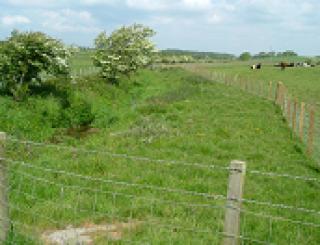Estimating Future Environmental Land Management Requirements
Published on 30 March 2010 in Sustainability and Communities , Ecosystems and biodiversity

Introduction
Estimating the scale of expenditure needed to effectively address environmental issues is a key consideration influencing the ongoing review of the EU Budget and future reform of the Common Agricultural Policy (CAP). The primary purpose of this research was to identify indicators capable of being used at the UK level as the basis for estimating the scale of environmental land management activity necessary to meet current policy objectives. This desk based study also provided estimates of how much it might cost to deliver the management required.
Key Points
A number of assumptions (e.g. that incentives, such as provided through agri-environment schemes, will be the primary delivery mechanism used to achieve environmental gains; that existing income-foregone calculations could be used to calculate land management costs) were made in the analyses. Taken together the overall impact of these assumptions means that the costs in the report may significantly underestimate the total funding necessary within the UK.
The analysis suggests that biodiversity, climate change and resource protection account for the greatest land area needing management under future agri-environment scheme options. When dealing with overlaps between indicators, biodiversity was given precedence in terms of identifying suitable management options, given that these are spatially fixed and agri-environment scheme options for biodiversity are sufficiently broad to cover other objectives.
The study estimated that the total cost of meeting publicly defined environmental objectives in the UK would be just under £2 billion per year, although this figure could vary between £1-3 billion due to differences in the cost of similar agri-environment scheme options across countries and the extent to which existing scheme options are sufficient to achieve the full range of policy objectives.
This is more than three times the funding currently available from existing CAP Pillar 2 allocations, but still less than the total current UK spend on Pillars 1 and 2 combined. The scale of need is hardly surprising bearing in mind that most of the environmental services required by wider society (including the management of carbon, water, biodiversity and landscapes) are currently unrewarded by conventional markets.
Research Undertaken
This study was conducted by ADAS and SAC for the UK Land Use Policy Group (LUPG). The policy scenario used as a context for this work was a reformed CAP with no Pillar 1 support to farming as modelled by ADAS, SAC and Risk & Policy Analysts in a previous study for Defra and Natural England. That study anticipated a significant restructuring of agriculture over time to a lower cost base in response to loss of Single Payment and an increase in the area of land ‘out of agriculture’ due to lack of economic viability.
The LUPG study used existing environmental priorities and scheme data and therefore did not take into account a range of other financial factors, such as: any changes to Pillar 2 scheme costs under a reformed CAP; the costs of addressing issues not adequately represented in the current Pillar 2 schemes; the costs of maintaining high nature value farming systems in areas where farming might not be economically viable in the absence of Pillar 1 and Less Favoured Area support.
Costs were included for those elements of management which go beyond the regulatory baseline, but which are currently supported by the cross-compliance requirements attached to direct payments under Pillar 1 (where such management is required to achieve one or more of the policy objectives). The results therefore provide an indication of the scale of future environmental land management requirements, taking account of a wide range of objectives in a synergistic way and examining all four UK administrations from the perspective on both coverage and cost.
Policy Implications
Overall, this was a challenging exercise which, to the best of knowledge, had never been attempted before for the UK. The results indicate an overall level of future Pillar 2 requirement of £1-3 billion, which is well above current levels, despite using current indicator areas and agri-environment scheme option payment rates. This suggests that addressing any additional challenges in CAP reform would further increase the figure.
A key finding was the extent to which indicators overlap and the scope for improved efficiency by delivering multiple objectives through a single land management option. In practice, achieving such synergies will require a high level of ‘joined-up’ thinking in terms of policy design and implementation. This will also need to account for policy conflicts and synergies where a single option cannot address all needs.
As increasing priority is given to tackling climate change, resource protection and flood mitigation, more attention should be given to the design of agri-environment scheme options which deliver these objectives in synergy with more established priorities such as biodiversity, landscape and public access to the countryside.
Author
Dr Davy McCracken, SAC davy.mccracken@sac.ac.uk
Topics
Sustainability and Communities , Ecosystems and biodiversity





